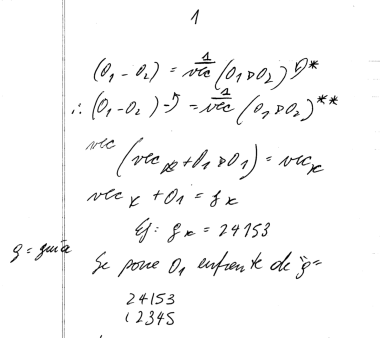From here to there
By Fernando Rodriguez Villegas
- Categories: Writing
One of the odd perks of getting old is that one can look back to the distant past and wonder with cold detachment just who the hell we were.
As a kid I was obsessed with cryptography and secret messages. I even halfheartedly tried to create a language that only my friends and I would understand. I wanted to build a robot. I also wanted to live in a desert island and made endless plans in my head on how I would run my life on it. Perhaps nothing of this is too surprising in a restless kid, reader of Jules Verne (“La isla misteriosa/The mysterious island”, “Viaje al centro de la Tierra/Voyage to the center of the Earth”).
So how did I get from there to becoming a researcher in pure mathematics? Not along a straight line for sure.
I started engineering at the Universidad de Buenos Aires, aiming for electronics, the robot thing. I found myself not caring about the specific answer to any exercise but was fascinated instead by the solution process. In a basic physics class the lecturer casually mentioned the exponential, even the cosine, of a matrix. What?
In the vaulted, vast, inspiring space of the Engineering central library (Paseo Colón!) I discovered a book that described the “dual numbers”. Just imagine this grotesque incarnation of the complex numbers: you add to the reals a quantity whose square is zero! How amazing, how beautiful.
I got a TI-99 programmable calculator, like all my classmates. We carried it around hanging from our belts looking like some kind of geeky cowboys. I spent hours playing with the built-in functions for matrices. Computing, for example, the limiting value of the inverse of x – A for x near an eigenvalue of A. You could program the calculator using at most 50 steps. What a triumph to realize two steps of your code could be combined to gain an extra line. It warped my programming style for years.
In the hall of that imposing building, at a booth of the university publishing house EUDEBA, I bought Kelley’s book “General Topology”, convinced by its preface that the only requirement was a knowledge of the real numbers. I couldn’t read past the first page.
About then I decided to switch to a degree in math, in the second year of University; didn’t have any idea of what I was doing, didn’t know you could make a living doing mathematics.
In my second year of high school in Buenos Aires, mathematics meant solving problems about triangles using a slide rule or a log table. The teacher would bring to class a huge slide rule he would hang from the top of the blackboard and start sliding away. That year I devised an encryption scheme involving permutations of the five vowels: a,e,i,o,u. I kept some notes I wrote then on this scheme, written in the standardized three-holed sheets (hojas de carpeta Rivadavia!) we had for all our high-school work. I never actually ever used the encryption scheme.

The all-male group marooned on the desert island is rescued at the very end of “The mysterious island” by the cryptic Captain Nemo, the main character of another Jules Verne book, with his submarine. Anachronistically apparently but a fabulous coup de theatre that impressed me immensely nevertheless.
I look at the stuff in these notes on permutations now, more than 45 years later, and don’t really understand any of it. But it sure looks like mathematics.